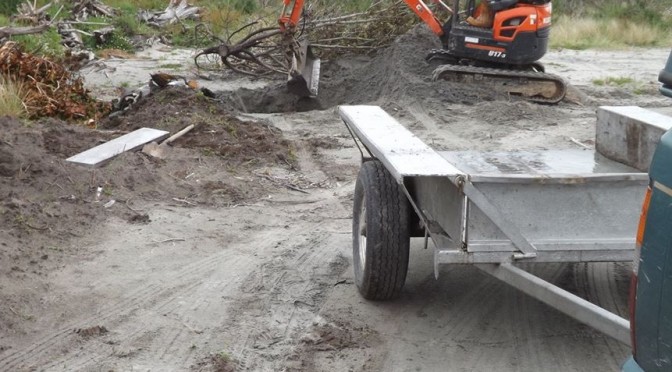WE CALLED IT ‘RATGATE’ – DoC CALLED IT ‘OPERATION TIDY RAT’
By Carol Sawyer
In case anyone missed this timeline originally, here it is again, updated, with some important new edits and additions. These include DoC’s reaction on 9 November, (now known via OIA request), and also information on the independent testing laboratory that was employed by Clean Green NZ Trust to test carcasses from the North Beach, Westport area.
I regard this incident and its aftermath as one of the more important stories of 2019. We won’t be forgetting this one, much as the Dept of Conservation would like us to.
TIMELINE :
1 – 3 November, 2019 – The Dept of Conservation aerially drops 104 tonnes of 1080 poison baits into the Maruia River catchment, South Island, to kill rats. This catchment feeds into the Buller River which eventually flows out to sea at Westport, 140 kms downstream.
********************************
8 November — A Westport local spots numerous dead creatures (rats, birds, marine life and a goat) on North Beach, Westport, at the mouth of the Buller River, after heavy rain.
********************************
9 November – Locals collect a trailer-load of 680 dead rats, a goat, octopods, skates, sole, starfish, crabs, barracuda, monkfish, crayfish ( all bottom feeders which could have eaten 1080 baits washed to sea) and dead seabirds from North Beach and local Trevor Reid goes to the DoC office at 1.30 pm to ask for assistance.
Two DoC workers eventually come down to North Beach with a digger and dig a two metre deep hole in the sand and bury the potentially toxic load on the beach. Freedom campers move elsewhere.
Buller District Council, on behalf of DoC, announces that the aerial 1080 drop at Springs Junction the previous week (Maruia catchment) “may have contributed to the problem”, and advises caution. As these carcasses could have been victims of both primary and secondary 1080 poisoning, selected carcasses are sent for testing – both by DoC and by an independent group.
*******************************
11 November – DoC, now moving into damage control, changes its story. On Prime TV News, West Coast Operations Director Mark Davies says ‘Doc thinks it’s unlikely the rats were poisoned by 1080 in a recent drop, then washed out of the hills by heavy rain. “I just can’t imagine that the two are connected”, he said.’
To Newshub, Davies said “… reports of dead fish and birds – along with the rats – are not consistent with the way 1080 is understood to work.” ( This statement is illogical considering 1080 poison is indiscriminate.)
However ‘One News’ hadn’t quite caught up with the new fairy story and said “The Department of Conservation (DOC) said they may be victims of a recent 1080 drop 140 kilometres away in the Lewis Pass National Reserve.”
Also on 11 November, more dead rats and dead muttonbirds are discovered on a beach 8 kms north of Westport, seagulls are seen picking dead rats out of the sea at Waimangaroa Beach 17 kms north of Westport, and further reports come in of dead creatures found at Punakaiki and elsewhere..
*******************************
12 November – “DOC’s West Coast regional director of operations Mark Davies said the 1080 theory was however just that – a theory – and highly unlikely.” TVNZ News
*******************************
13 November – DoC’s Buller Operations Manager, Bob Dickson, clutching at straws now, announces a brand new DoC theory – The rats were committing suicide. They had run out of food and were all jumping into the rivers and rafting, dead, down to the beaches.
*******************************
15 November – Announcement by two non-profit environmental groups, Flora and Fauna Aotearoa and Clean Green New Zealand that the first independent laboratory test results have been returned. Laboratory scientists tested samples taken from 5 rats, 1 Weka, 2 Sooty shearwaters, 1 starfish and 6 mussels. The samples from 4 of the 5 rats tested positive for three chemical markers of 1080 poison, including the toxic chemical, fluorocitrate. This was also the case for the birds. The starfish and weka also tested positive for fluorocitrate. There were no traces of 1080 detected in the mussels.
FOOTNOTE:
- Why is Landcare using a testing method more than 30 years old?
- Why was a crayfish collected and not analysed?
- How long did Massey University hold onto the samples for autopsies (which were inconclusive) before sending the remains to Landcare?
- Is there a chain of custody for what was tested?
- Which parts were sent from Massey to Landcare, and which parts did Landcare analyse?
- Were the samples homogenized to release any bound fluoroacetate?
- Why did Landcare not release all the results?

